Wakayama is a prefecture in Japan known for its diverse and abundant birdlife. Located in the Kii Peninsula, Wakayama is well-known for its wetlands and mountain forests, which provide excellent habitats for many species of birds.
There are about 79 species of birds that can be found in Wakayama, including waterfowl, songbirds, raptors, and shorebirds. Notable species include the Blakiston’s Fish Owl, the Japanese Pygmy Woodpecker, and the Black Kite.
With its rich avian diversity, Wakayama is an ideal destination for birders of all skill levels.
1. Green Pheasant
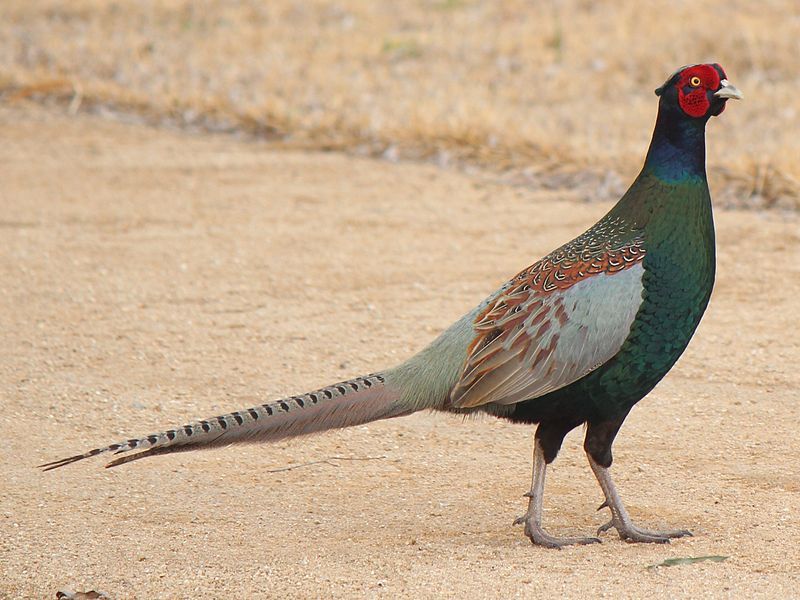
The green pheasant, also known as the Japanese green pheasant, is an avian species native to the Japanese archipelago. It is endemic to this region, meaning it is not found in any other part of the world.
This species of pheasant is omnivorous, meaning it eats both plants and animals. Some taxonomic authorities group this bird as a subspecies of the common pheasant, Phasianus colchicus.
This means that the green pheasant and the common pheasant share some common traits and characteristics. This species of pheasant is so important to Japan that it has been declared the national bird of the country.
It is prized by the Japanese people for its beauty and grace and is seen as a symbol of good luck.
| Kingdom | Animalia |
| Phylum | Chordata |
| Class | Aves |
| Order | Galliformes |
| Family | Phasianidae |
| Genus | Phasianus |
| Species | P. versicolor |
2. Mandarin Duck
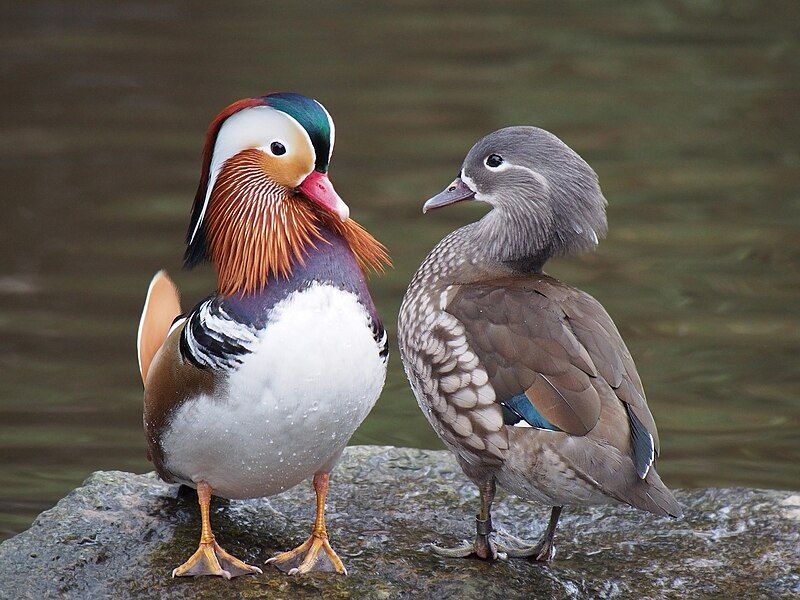
The mandarin duck is a species of duck that is native to the East Palearctic region. It is a medium-sized bird, measuring between 41-49 cm long and having a wingspan of 65-75 cm.
This species of duck is sexually dimorphic, meaning that the males and females look quite different from each other. Male mandarin ducks are characterized by their brightly colored plumage, while the females are much less showy, with a mostly brown and grey pattern.
The mandarin duck is closely related to the North American wood duck, making them the only two members of the genus Aix. Both species are highly adapted to living in and around wooded areas, such as rivers, streams, and lakes, and are adept swimmers.
They feed on a variety of aquatic plants and insects, as well as small fish. The mandarin duck is an important species for conservation, as it is listed as an endangered species in parts of its native range.
As a result, conservation efforts are underway to protect and restore their natural habitats and to increase their numbers.
| Kingdom | Animalia |
| Phylum | Chordata |
| Class | Aves |
| Order | Anseriformes |
| Family | Anatidae |
| Genus | Aix |
| Species | A. galericulata |
3. Whooper Swan
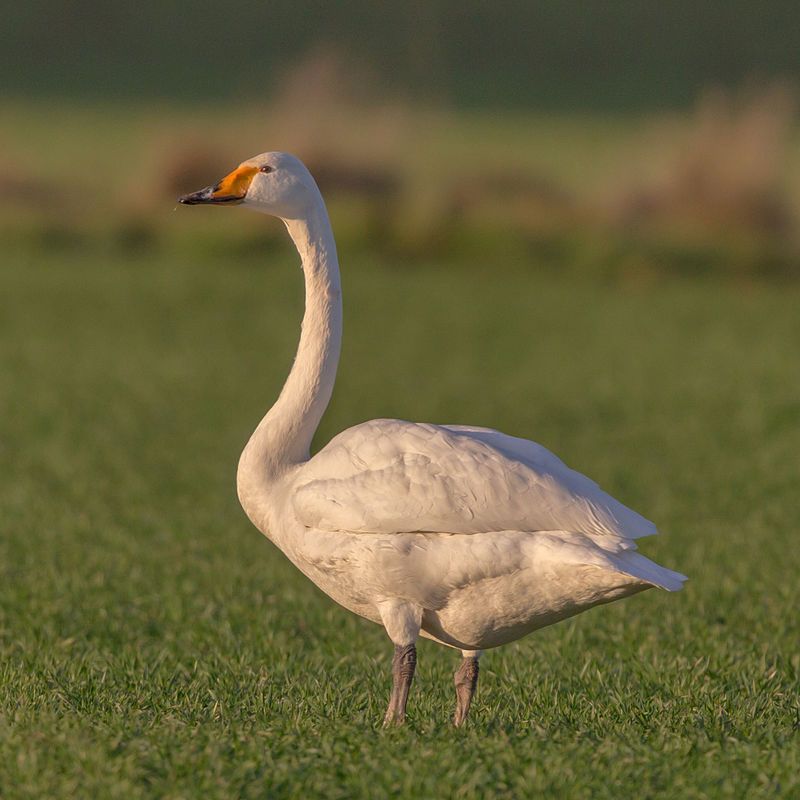
The Whooper Swan, also referred to as the Common Swan, is a large bird that is native to the Northern Hemisphere. It is a member of the Cygnus genus and is closely related to the North American Trumpeter Swan.
The two species are similar in many respects, with the Whooper Swan being more widespread throughout the northern regions of Europe, Asia, and North America. The Whooper Swan is a large bird, measuring up to 1.5 meters in length and having a wingspan of up to 3 meters.
It has a white plumage with black legs and feet and a distinctive yellow bill. It is an adept swimmer and has a loud and melodic call. In terms of its habitat, the Whooper Swan prefers large wetlands, such as lakes and bogs, as well as shallow coastal waters.
It feeds mainly on aquatic plants, but will also feed on mollusks, crustaceans, and small fish.
It typically nests on the ground near water, making a large mound of vegetation for its eggs. The Whooper Swan is a migratory species, with some populations undertaking long-distance migrations to wintering grounds.
The species is currently listed as Least Concern by the International Union for Conservation of Nature, although its population has been decreasing in recent years due to human activities such as habitat degradation, hunting, and pollution.
| Kingdom | Animalia |
| Phylum | Chordata |
| Class | Aves |
| Order | Anseriformes |
| Family | Anatidae |
| Genus | Cygnus |
| Species | C. cygnus |
4. Common Cuckoo
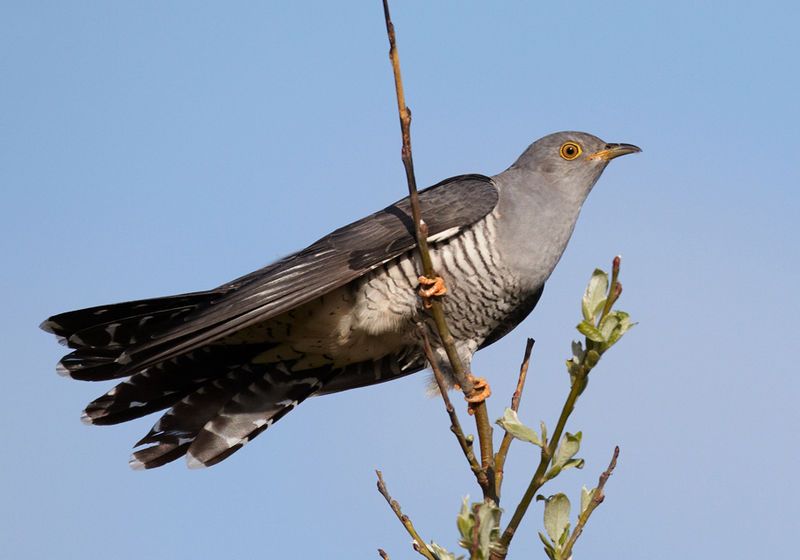
The common cuckoo is a type of bird that belongs to the Cuculiformes order. This order of birds includes roadrunners, anis, and coucals. The common cuckoo is found in many parts of Europe and Asia during the summer months and then migrates to Africa for the winter.
This species is quite widespread in its migratory range, allowing it to take advantage of seasonal changes in resources and climates. The common cuckoo is known for its unique call, which is a loud and distinct “cuck-oo” sound.
The cuckoo is also known for its habit of laying its eggs in other birds’ nests, leaving the host birds to care for its young.
This behavior has given rise to the phrase “cuckoo’s nest”, which is used to refer to any chaotic or disorganized situation. The common cuckoo is an important part of the ecosystem, as it helps to control the populations of some of its prey.
This species is also hunted for its feathers, which are used in traditional ceremonies and ceremonies of worship. Overall, the common cuckoo is a fascinating species of bird, with an impressive migratory range and unique behavior.
Its importance to the environment and its cultural significance make it a species worth learning more about.
| Kingdom | Animalia |
| Phylum | Chordata |
| Class | Aves |
| Order | Cuculiformes |
| Family | Cuculidae |
| Genus | Cuculus |
| Species | C. canorus |
5. Little Grebe
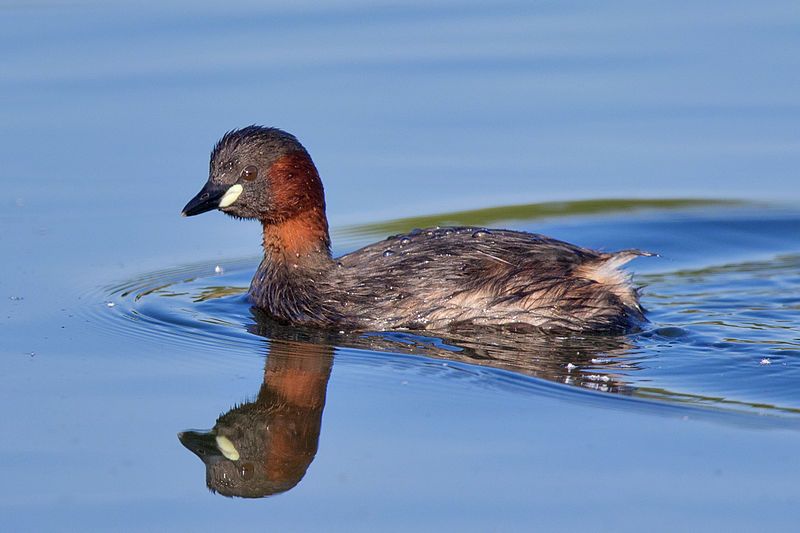
The little grebe, also known as dabchick, is a species of water bird belonging to the grebe family. Its scientific name is derived from the ancient Greek words “takhus”, meaning “fast”, and “bapto”, meaning “to sink under”.
The specific species, ruficollis, is derived from the Latin words “rufus”, meaning “red”, and “collis”, meaning “neck”. The Latin collum, which is the origin of collis, also means “neck”.
This species of grebe is named after its reddish-brown neck, which is a distinguishing feature of the bird.
| Kingdom | Animalia |
| Phylum | Chordata |
| Class | Aves |
| Order | Podicipediformes |
| Family | Podicipedidae |
| Genus | Tachybaptus |
| Species | T. ruficollis |
6. Lesser Cuckoo
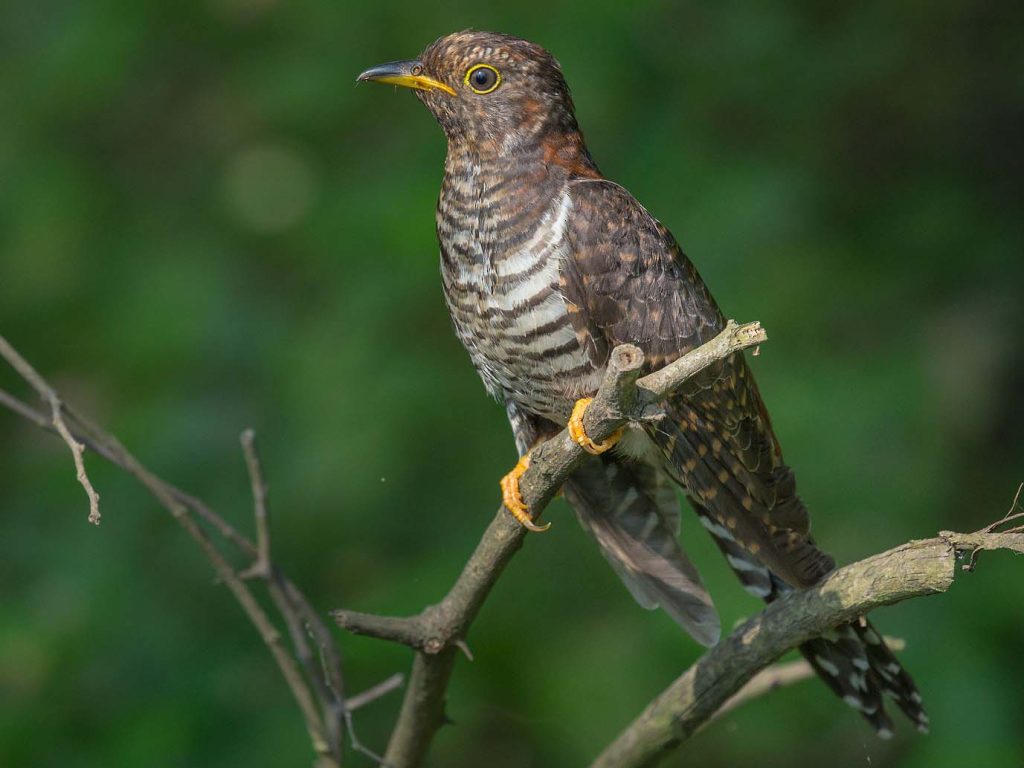
Source: ebird.org
The lesser cuckoo is a species of cuckoo belonging to the Cuculidae family. It is found in a wide range of countries, from Bangladesh in the east to Kenya in the west. In South Asia, it can be found in Bangladesh, Bhutan, India, and Nepal.
In East Asia, it is present in China, Hong Kong, Japan, North Korea, and South Korea. It is also found in the Democratic Republic of the Congo, and in parts of East Africa such as Kenya. The lesser cuckoo has a slender body and a long tail.
Its plumage is grey-brown, with white and black stripes on the head and breast. It feeds mainly on insects, but will also eat small fruits, berries, and seeds. It builds its nest in shrubs and trees, laying its eggs in other birds’ nests.
The female lays up to six eggs which are incubated by the host bird.
The young cuckoos hatch out after 12-14 days and are fed by the host bird until they become independent. The lesser cuckoo is an important species in many cultures, and its song is often used as a lucky charm in East Asia.
It is also a popular game bird in some parts of India and is hunted for its meat.
In some regions, it is considered a pest due to its tendency to lay its eggs in other birds’ nests. Overall, the lesser cuckoo is a fascinating bird that is found in a wide range of countries and habitats and is a valuable part of many cultures.
| Kingdom | Animalia |
| Phylum | Chordata |
| Class | Aves |
| Order | Cuculiformes |
| Family | Cuculidae |
| Genus | Cuculus |
| Species | C. poliocephalus |
7. Oriental Cuckoo
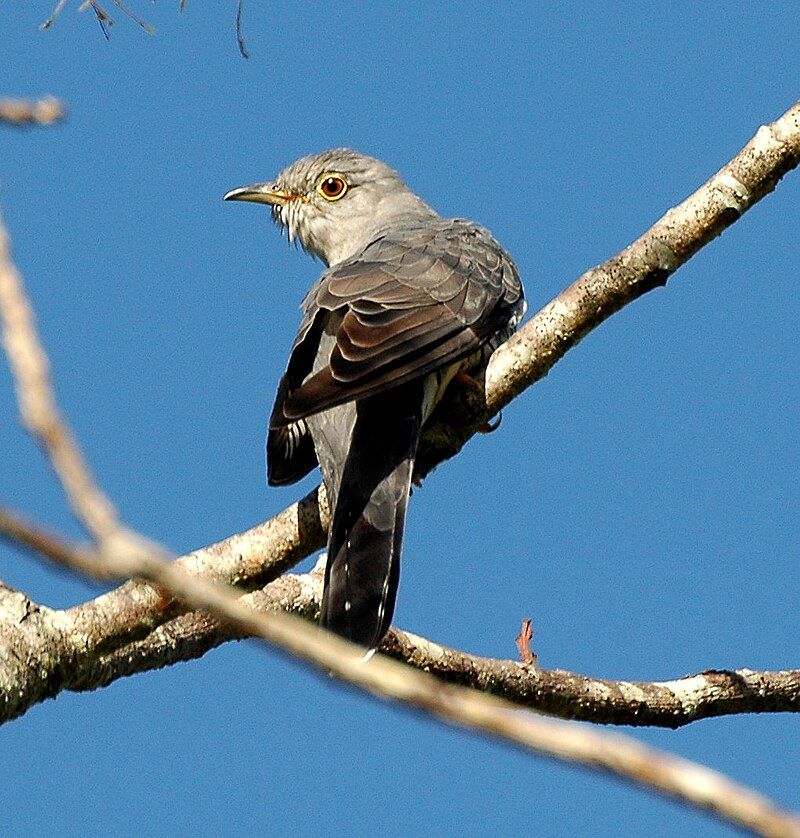
The Oriental cuckoo (Cuculus horsfieldi) is a species of cuckoo found in parts of South and Southeast Asia. It is a member of the family Cuculidae, which includes other species such as the common cuckoo, the roadrunner, and the coucals.
The bird was previously classified as a subspecies of the Himalayan cuckoo (Cuculus saturatus), with the name ‘Oriental cuckoo’ being used for the combined species. The Oriental cuckoo has a greyish-brown back and wings with a white underside with dark barring.
Its upper parts have a reddish sheen, while its head, neck, and throat are white. It has a medium-length bill and a long and broad tail.
Its call is a loud, metallic “kuk-kuk-kuk”.The Oriental cuckoo is found in parts of South and Southeast Asia including Nepal, India, Bangladesh, Myanmar, Thailand, Laos, Cambodia, Vietnam, and parts of Malaysia and Indonesia.
It is a resident species, and breeds in the region from April to June. Its preferred habitats include gardens, woodlands, and open scrub. The Oriental cuckoo feeds on caterpillars, grasshoppers, termites, beetles, and other insects.
It typically forages on the ground or in low vegetation. The bird is monogamous, and the female builds the nest, which is usually a small cup-shaped shallow platform of twigs lined with fine grass and feathers. The female lays two to four eggs, which incubate for about 17 days.
The young birds are altricial and remain in the nest for about 20 days before fledging. The Oriental cuckoo is not considered to be globally threatened. However, its population is declining due to habitat loss and degradation, especially in areas where it was formerly abundant.
Conservation efforts are needed to protect this species and its habitats.
| Kingdom | Animalia |
| Phylum | Chordata |
| Class | Aves |
| Order | Cuculiformes |
| Family | Cuculidae |
| Genus | Cuculus |
| Species | C. optatus |
8. Falcated Duck
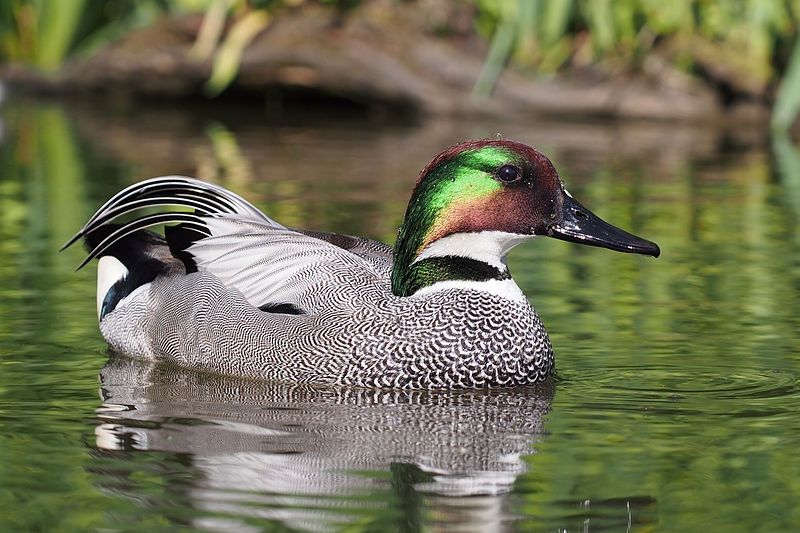
The falcated duck, also known as the falcated teal, is a species of dabbling duck native to the east Palearctic region. It is roughly the size of a gadwall, a medium-sized duck. It has a distinctive crescent-shaped, or falcate, white patch on its wing.
The adult male has a grey head and neck, a white eye ring, and a white patch on its breast, while the adult female is more mottled. The falcated duck is a gregarious species, usually seen in small flocks on shallow lakes and ponds.
It feeds mainly on aquatic plants and insect larvae. It breeds in spring, laying its eggs in a shallow ground nest. The falcated duck is an important game species, as well as a popular cage bird.
| Kingdom | Animalia |
| Phylum | Chordata |
| Class | Aves |
| Order | Anseriformes |
| Family | Anatidae |
| Genus | Mareca |
| Species | M. falcata |
9. Baikal Teal
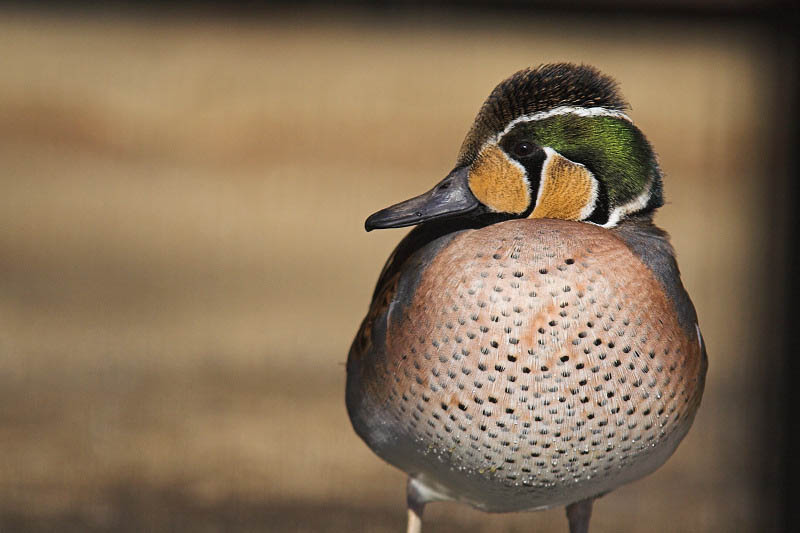
Source: Wikipedia
The Baikal teal is a species of dabbling duck that is native to eastern Russia. It is also known as the bimaculate duck or squawk duck. This species of duck has a specific breeding and wintering pattern.
During the summer months, the Baikal teal breeds in the eastern parts of Russia. When the temperatures drop and the winter months come, the birds migrate to East Asia, where they can spend the winter in a more temperate climate.
The Baikal teal is an important waterfowl species and is a protected species due to its limited range and population. This species of duck is a relatively small duck and is easily distinguishable by its dark blue-green color and white spots on its wings and head.
The Baikal teal is also considered an important species for conservation due to its limited range and the threats to its habitat.
| Kingdom | Animalia |
| Phylum | Chordata |
| Class | Aves |
| Order | Anseriformes |
| Family | Anatidae |
| Genus | Sibirionetta |
| Species | S. formosa |
10. White-Naped Crane
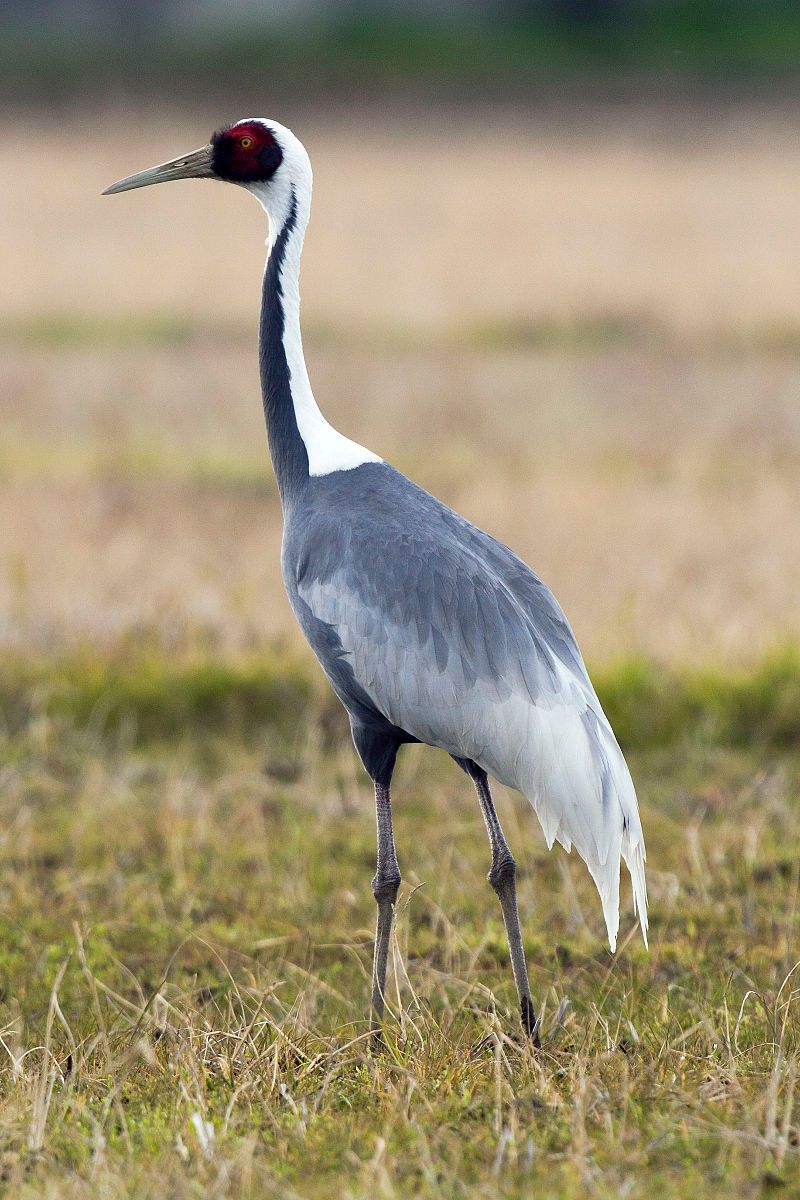
The white-naped crane is an impressive species of bird belonging to the crane family. It is a large bird, measuring between 112 cm and 125 cm in length, approximately 130 cm in height, and weighing up to 5.6 kg.
Its feathers are predominantly grey and white, with a distinctive red patch on its face and pinkish legs. This majestic bird is a sight to behold, with its impressive size and striking colouration.
It inhabits the wetlands, grasslands, and mountain meadows of Asia, and is known for its powerful and graceful movements.
It feeds mainly on vegetation, but also eats insects, mollusks, and small fish. The white-naped crane is an endangered species, as its habitats are continually being destroyed by human activities such as urbanisation and agricultural expansion.
Conservation efforts are being made in order to protect this species, such as creating safe havens and promoting education.
The white-naped crane is a beautiful bird that is worth protecting, and its presence in the wild is a reminder of the importance of conserving the environment.
| Kingdom | Animalia |
| Phylum | Chordata |
| Class | Aves |
| Order | Gruiformes |
| Family | Gruidae |
| Genus | Antigone |
| Species | A. vipio |
11. Streaked Shearwater
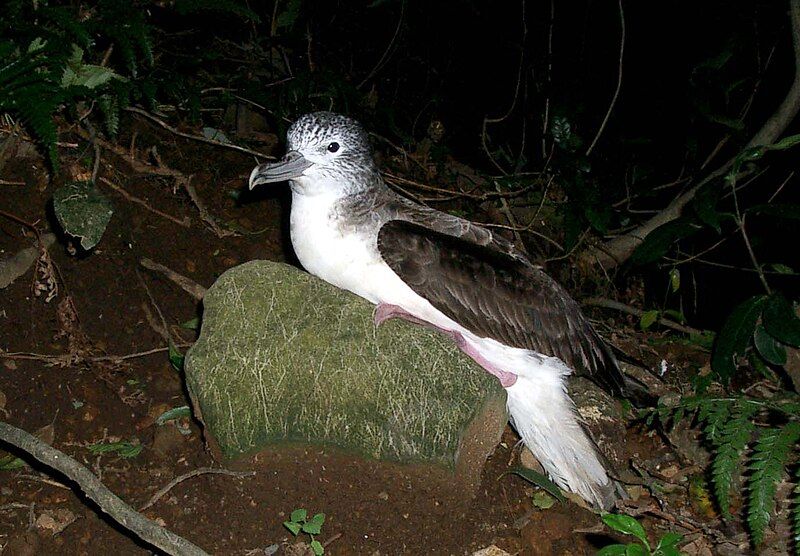
The streaked shearwater is a medium-sized seabird species with an average length of around 48 cm and a wingspan of 122 cm. It has a very distinct black and white mottled pattern on its feathers, which is how the bird got its name.
The streaked shearwater is a migratory species, mainly found in the Pacific Ocean, ranging from Central America to northern Japan. It usually breeds in the North Pacific and spends the winter in the southern Pacific.
During the breeding season, these birds form large colonies on islands, where they tend to their nests and eggs. The streaked shearwater is known to be an adept hunter and is capable of diving beneath the surface of the ocean to catch fish and other prey.
They are also known to scavenge food from the surface of the ocean or steal it from other seabirds. The streaked shearwater is a highly adaptable species and is able to survive in a range of habitats, from remote islands to coastal areas.
| Kingdom | Animalia |
| Phylum | Chordata |
| Class | Aves |
| Order | Procellariiformes |
| Family | Procellariidae |
| Genus | Calonectris |
| Species | C. leucomelas |
12. Short-Tailed Shearwater
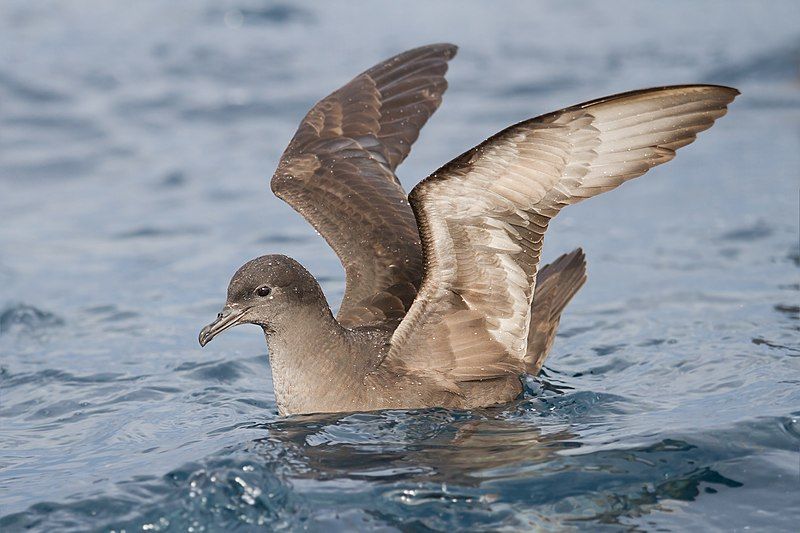
The short-tailed shearwater, also known as the slender-billed shearwater, yolla, or moonbird, is a highly abundant species of seabird found in Australian waters.
It is most commonly referred to as the muttonbird in Australia and is one of the few native bird species in which its chicks are harvested on a commercial scale.
This species is found in huge numbers in coastal waters around Australia, particularly in the waters of the Bass Strait and Tasmania.
They typically feed on fish and crustaceans and can be seen in large flocks near the shore. The muttonbird is an important species to the Aboriginal people of Australia and is traditionally harvested for its meat, feathers, and eggs.
The eggs are harvested in a process known as ‘muttonbirding’, and is an important activity for the Aboriginal communities that practice it. The eggs are typically collected at night, when the birds are at rest, and are then cooked and eaten.
The feathers are also traditionally used in clothing and in the making of traditional instruments. The short-tailed shearwater is also an important species for conservation efforts.
It is listed as near threatened on the IUCN Red List and is protected from commercial harvesting in most of its range.
Conservation efforts have been focused on protecting the species from the threats posed by human activities, such as pollutants and the destruction of its natural habitat.
With the protection and conservation of this species, its numbers are slowly increasing, and it is now seen as a symbol of hope for many coastal communities.
| Kingdom | Animalia |
| Phylum | Chordata |
| Class | Aves |
| Order | Procellariiformes |
| Family | Procellariidae |
| Genus | Ardenna |
| Species | A. tenuirostris |
13. Japanese Pygmy Woodpecker
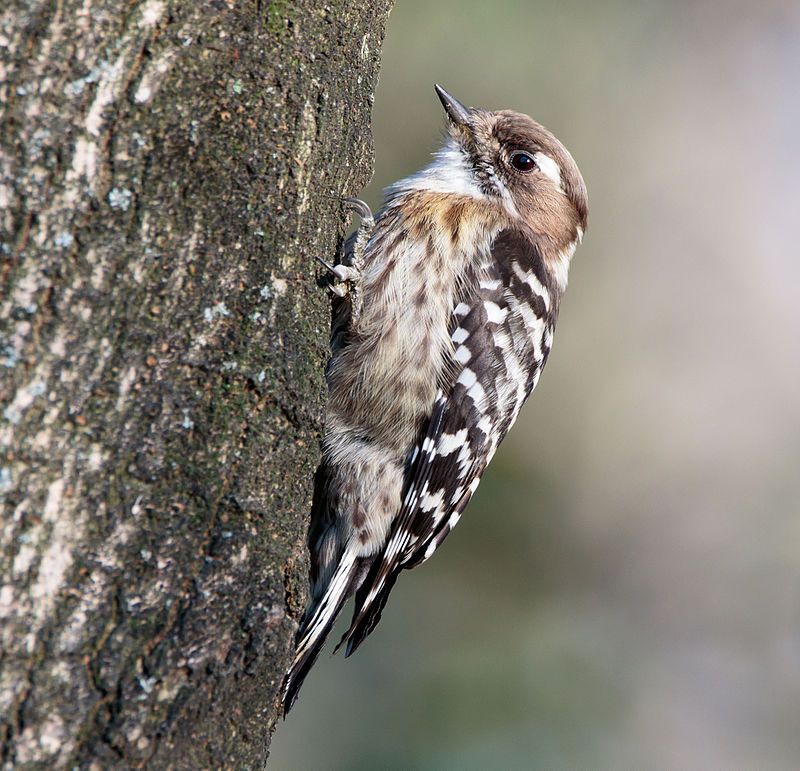
The Japanese Pygmy Woodpecker is a species of woodpecker that is found in various types of forests across Russia, China, Korea, and Japan. It is a small woodpecker, usually having a length of around six inches.
This bird has a short beak, a brownish-gray back, and tan underparts, with white spots on its wings and tail.
Its habitat is typically woodlands, especially coniferous and deciduous forests. The Pygmy Woodpecker has been placed in two different taxonomic families, Dendrocopos and Picoides.
It is thought to be closely related to other woodpeckers in the Dendrocopos genus, such as the Eurasian Treecreeper and the Lesser Spotted Woodpecker. This species has a varied diet, feeding on insects, seeds, and fruits.
It is also known to forage for food on tree trunks and branches. The Pygmy Woodpecker is not considered to be endangered, and its population is thought to be stable.
However, it is still important to take measures to preserve its habitat, as it is vulnerable to deforestation and other human activities.
| Kingdom | Animalia |
| Phylum | Chordata |
| Class | Aves |
| Order | Piciformes |
| Family | Picidae |
| Genus | Yungipicus |
| Species | Y. kizuki |
14. Black Scoter
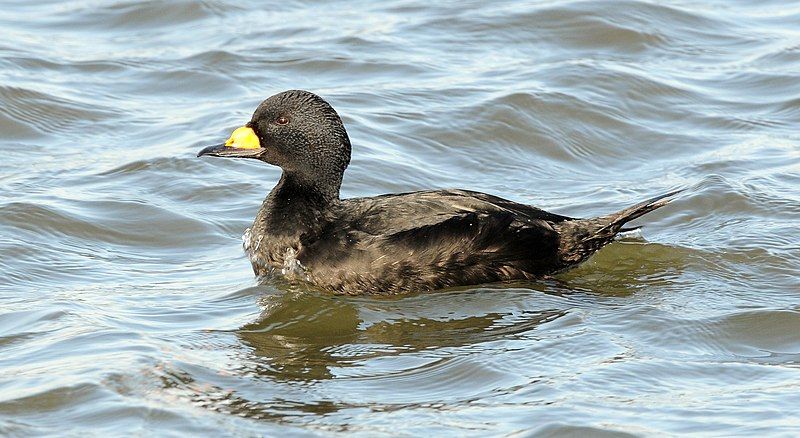
The black scoter, also known as the American scoter, is a large sea duck native to North America. It typically measures between 43 and 49 centimeters in length and is easily identifiable due to its distinctive black plumage.
The name of the genus, Melanitta, is derived from two Ancient Greek words: “melas,” meaning “black,” and “netta,” meaning “duck.” The species name, Americana, is derived from the Latin word for “American.” This species of duck is closely related to the white-winged scoter, also known as the black-bellied scoter.
The two species are often found together in large flocks, usually on coastal waters. The black scoter feeds on crustaceans, mollusks, and aquatic plants. Its range extends from Alaska across most of Canada to the Atlantic Coast of the United States.
It is also found in many parts of Europe, particularly in the Baltic Sea and the British Isles.
| Kingdom | Animalia |
| Phylum | Chordata |
| Class | Aves |
| Order | Anseriformes |
| Family | Anatidae |
| Genus | Melanitta |
| Species | M. americana |
15. Hooded Crane
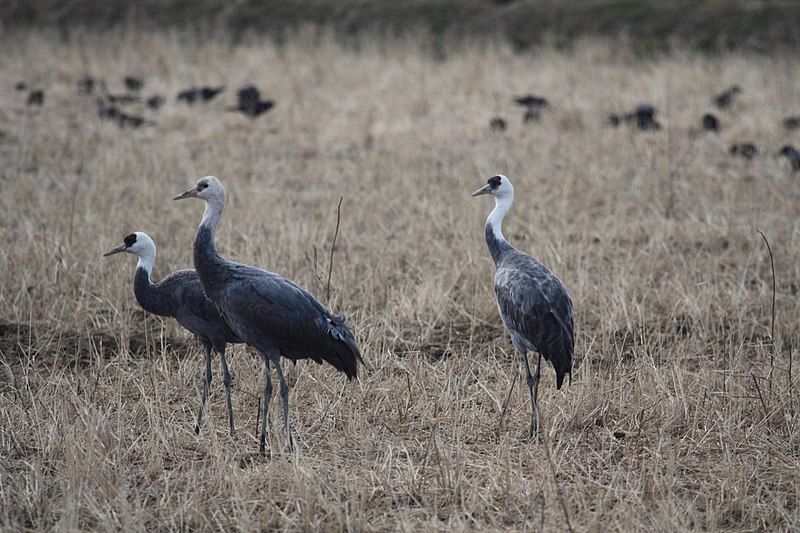
The Hooded Crane is a type of crane found in East Asia. It is considered a migratory bird, meaning that it regularly travels between different areas.
In particular, the hooded crane is a very popular visitor to Japan, as it makes its way to the country’s wetlands and other places where it can find food and rest. While in Japan, the hooded crane feeds mainly on aquatic vegetation, including wild rice and other plants.
It is also known to forage for invertebrates, such as crayfish and dragonflies.The hooded crane is an important species in East Asia.
It is listed as vulnerable on the International Union for Conservation of Nature’s Red List, due to threats such as habitat destruction and degradation, hunting, and the use of pesticides.
As such, there have been efforts to protect the species, such as the establishment of nature reserves and other protected areas. Additionally, there are several organizations that are dedicated to the conservation of the hooded crane and its habitat.
These organizations work to raise awareness about the species, as well as to research and develop conservation strategies. The hooded crane is an iconic species in East Asia, and its presence in Japan is an important part of the country’s culture.
Many people look forward to its arrival each year, as it signifies the start of spring and warmer weather. It is also an important symbol of friendship and peace, as it is seen as a messenger between people and between different countries.
| Kingdom | Animalia |
| Phylum | Chordata |
| Class | Aves |
| Order | Gruiformes |
| Family | Gruidae |
| Genus | Grus |
| Species | G. monacha |
16. Baer’s Pochard
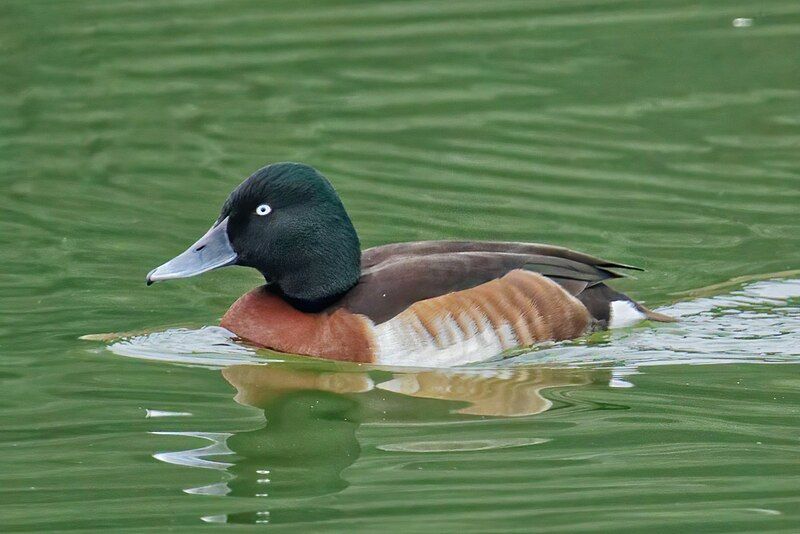
Baer’s pochard is a species of diving duck native to eastern Asia. It is a permanent resident of North and Central China and used to breed in Southeast Russia and Northeast China. During the winter, these birds migrate to areas such as Southern China, Vietnam, Japan, and India.
As a monotypic species, Baer’s pochard only has one type of species. The holotype, which is the original specimen or individual from which the species was first described, was collected from the middle Amur region.
| Kingdom | Animalia |
| Phylum | Chordata |
| Class | Aves |
| Order | Anseriformes |
| Family | Anatidae |
| Genus | Aythya |
| Species | A. baeri |
17. Copper Pheasant
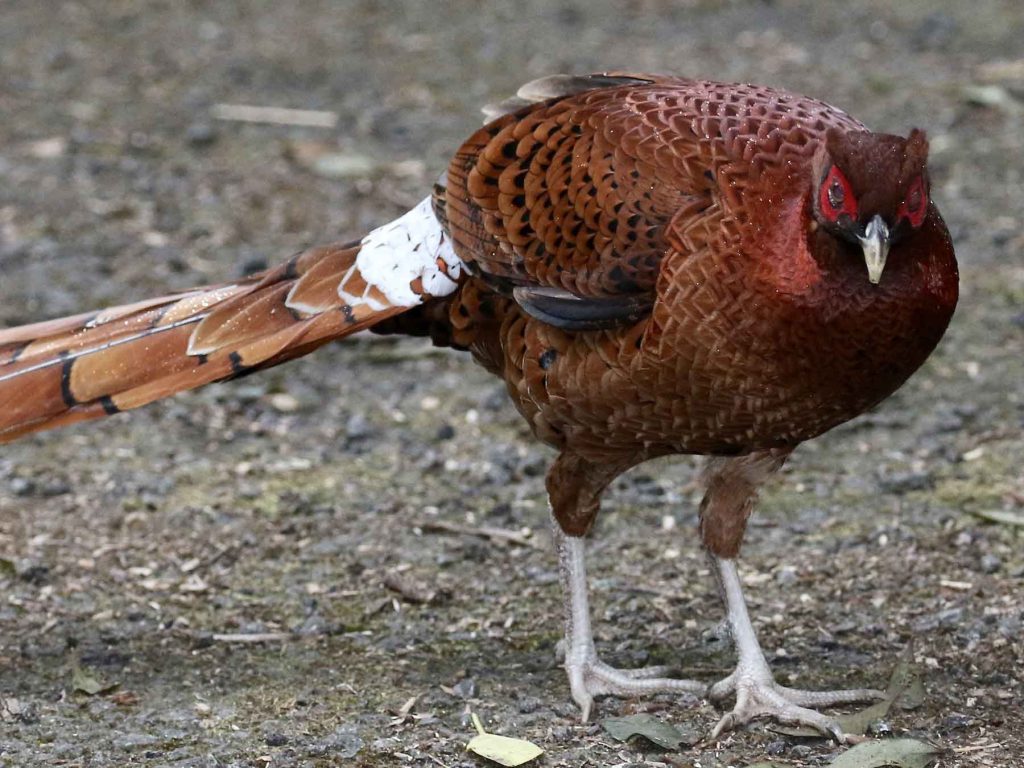
Source: ebird.org
The copper pheasant, also known as Soemmerring’s pheasant, is a bird native to Japan. It is a species of pheasant, and its scientific name (Syrmaticus soemmerringii) acknowledges the work of German scientist Samuel Thomas von Sömmerring.
Sömmerring was a renowned anatomist from the late 18th century, and he is credited with the discovery of several new species of animals.
His work was highly influential in the field of natural history, and his contributions to the field have been remembered through the naming of this particular species of pheasant. The copper pheasant is a species of game bird, and it is quite distinct in appearance.
It has a brightly-colored crest on its head, and its body has a metallic, copper-like sheen. The pheasant is also known for its long, curved tail feathers, which can reach up to 20 inches in length.
This species is generally found in forested areas of Japan, and it feeds on a variety of insects, seeds, and fruits. The copper pheasant is an important part of Japan’s biodiversity, and it is an important species to conserve.
Unfortunately, it is threatened by habitat loss due to human activity, as well as by the introduction of non-native species. Conservation efforts are ongoing to ensure the continued existence of this species in Japan.
| Kingdom | Animalia |
| Phylum | Chordata |
| Class | Aves |
| Order | Galliformes |
| Family | Phasianidae |
| Genus | Syrmaticus |
| Species | S. soemmerringii |
18. Japanese Night Heron
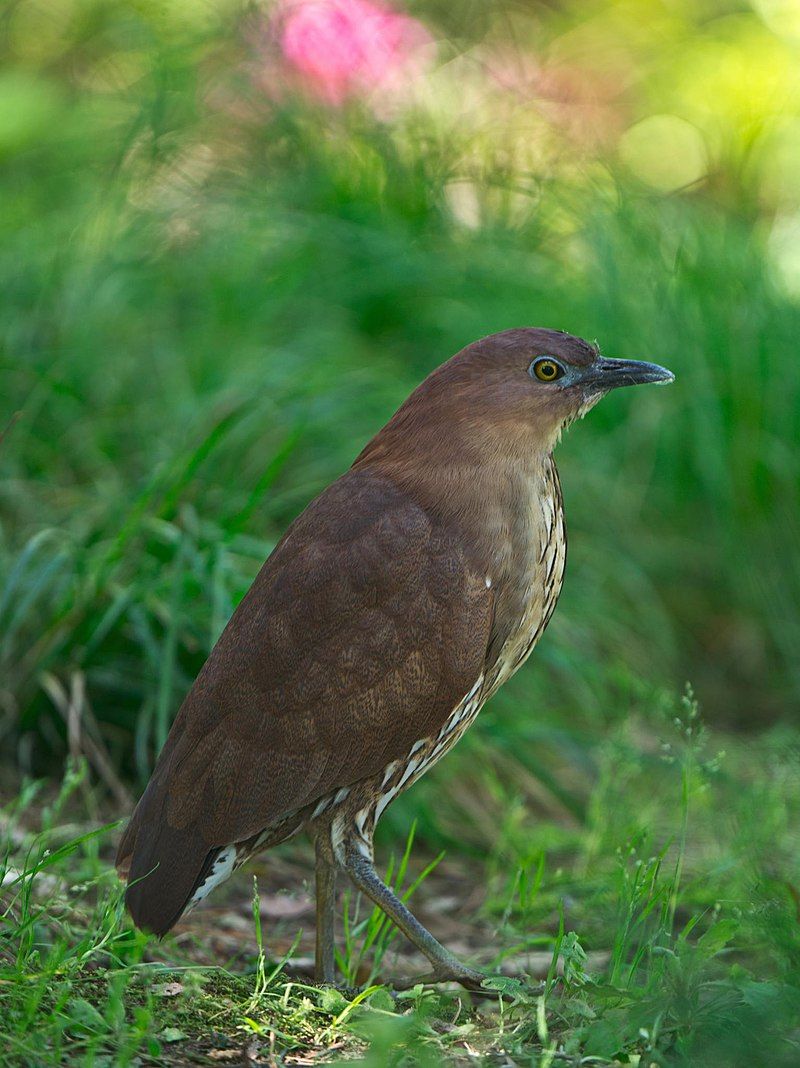
The Japanese night heron is a species of heron that is found in East Asia. This species breeds in Japan and migrates to the Philippines and Indonesia during the winter months. During the spring and summer months, the heron can also be spotted in Korea and the Russian Far East.
The Japanese night heron has specific habitat preferences. It prefers to inhabit dense and damp forests, both in its native breeding grounds of Japan and in the areas it winters in, such as the Philippines and Indonesia.
These areas provide the perfect environment for this species of heron, as they have a plentiful supply of food and shelter from the elements.
| Kingdom | Animalia |
| Phylum | Chordata |
| Class | Aves |
| Order | Pelecaniformes |
| Family | Ardeidae |
| Genus | Gorsachius |
| Species | G. goisagi |
19. Red-Throated Loon
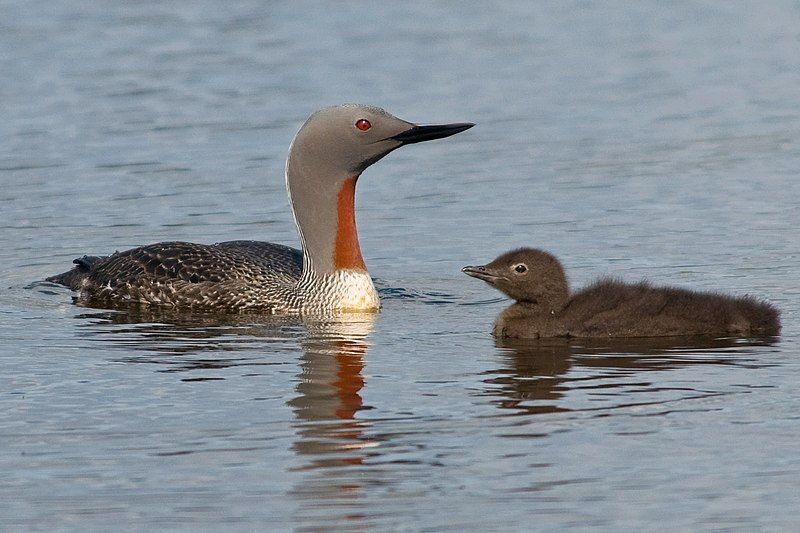
The red-throated loon, also known as the red-throated diver, is a migratory aquatic bird found in the northern hemisphere.
It is the most widespread of the loon or diver family, making its home in the Arctic during the breeding season and northern coastal waters during the winter months. The red-throated loon is a medium-sized bird, with a long neck and legs, and a pointed bill.
Its head and neck are typically grey in color, while its back is mottled grey and white. Its underside is mostly white, with a distinctive red throat patch. The red-throated loon is a powerful swimmer and is able to dive to depths of up to 50 meters in search of food.
It primarily feeds on fish and small crustaceans, and will also consume aquatic plants. During the breeding season, pairs will construct a floating nest on the surface of the water. The female will lay up to four eggs, and both parents will take turns incubating them.
Once the chicks hatch, they will remain with their parents until they are able to fly and fend for themselves. The red-throated loon is an important species in many parts of the world and is listed as a species of least concern by the International Union for Conservation of Nature (IUCN).
However, their populations are declining due to habitat destruction, pollution, and overfishing. Conservation efforts, such as habitat protection, are needed to ensure that this species is able to survive and thrive in the future.
| Kingdom | Animalia |
| Phylum | Chordata |
| Class | Aves |
| Order | Gaviiformes |
| Family | Gaviidae |
| Genus | Gavia |
| Species | G. stellata |
20. Demoiselle Crane
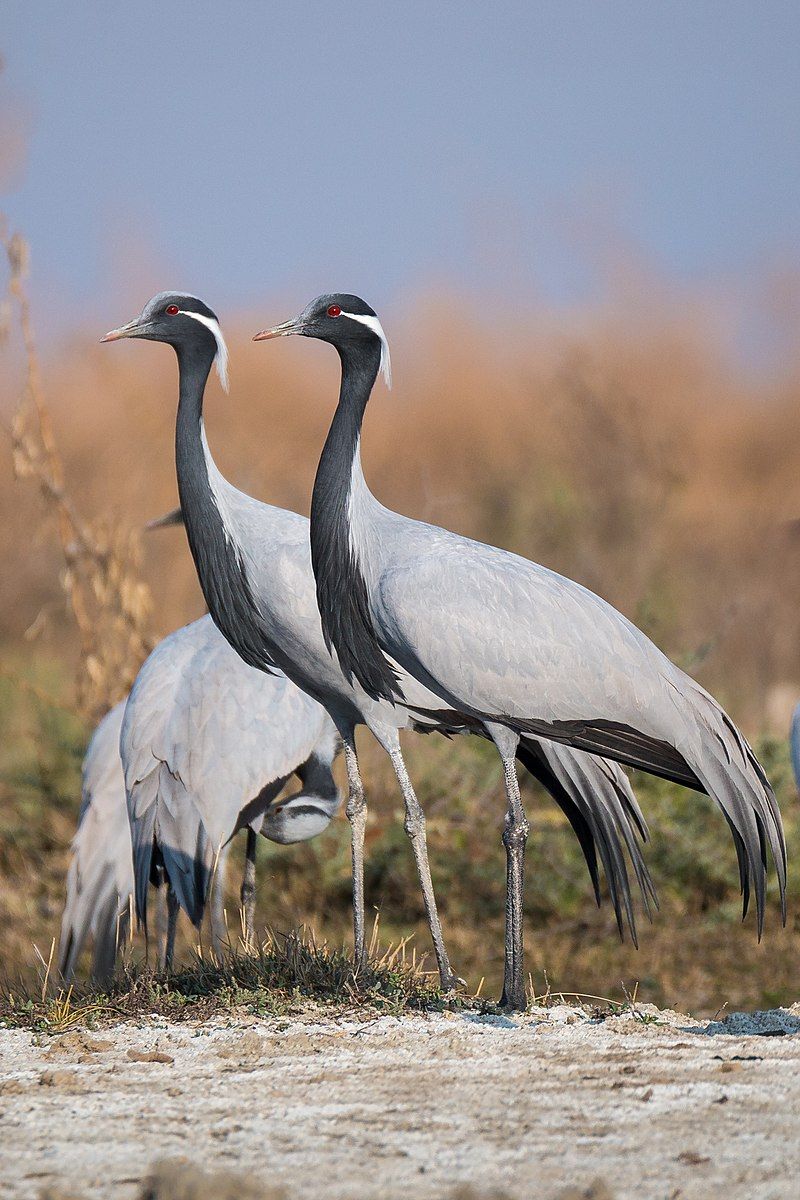
The Demoiselle Crane is a species of crane found throughout a wide range of Central Eurosiberia, between the Black Sea and Mongolia, as well as parts of northeast China. They are migratory birds, who travel to different parts of the region for the winter and summer months.
Along with these regions, there is also a small breeding population of Demoiselle Cranes in Turkey. These birds have grayish-brown plumage, with a black, pointed bill and a white patch on the crown.
The males are slightly smaller than the females and have a black throat and a white breast with a black band running along the length of its body. Females have a grayish-brown throat and a white patch on its crown, which is usually darker than that of the males.
The crane’s diet consists mainly of plant matter such as seeds, grains, and small insects, as well as the occasional frogs and fish. These cranes build their nests in shallow wetlands, such as marshes and meadows, and are usually found in groups of two to five individuals.
The Demoiselle Crane is an important species for conservation, due to its declining population in some areas. It is estimated that there are only around 25,000 mature individuals left, which is a decrease of over 20% in the past three generations.
Conservation efforts have been made to protect their habitats, and there are several protected areas for them in various countries. The main threat to the species is the destruction of their wetland habitats by human activities.
| Kingdom | Animalia |
| Phylum | Chordata |
| Class | Aves |
| Order | Gruiformes |
| Family | Gruidae |
| Genus | Grus |
| Species | G. virgo |
21. Laysan Albatross
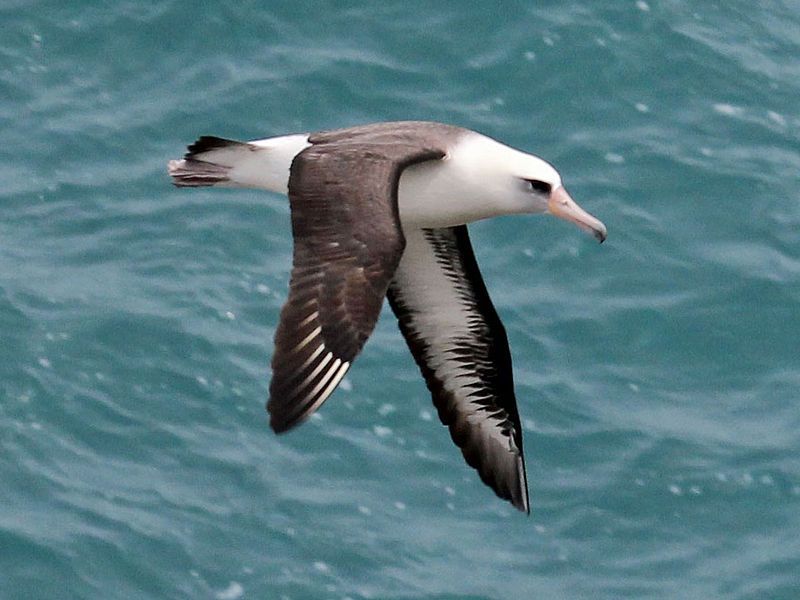
The Laysan albatross is a large seabird that is found across the North Pacific Ocean. Its range extends from the Kuril Islands in the west to Hawaii in the east, and from the Aleutian Islands in the north to the Mariana Islands in the south.
The Laysan albatross is an important part of the marine ecosystem, as it helps to spread nutrients and remove debris from the ocean. The Northwestern Hawaiian Islands are of particular importance to the Laysan albatross, as it is home to 99.7% of the entire population.
This archipelago of islands, composed of Nihoa, Necker, French Frigate Shoals, Gardner Pinnacles, Maro Reef, Laysan, Lisianski, Pearl and Hermes, Midway, Kure, and the remote and uninhabited islands, provides the ideal habitat for the albatross.
These islands are mostly located in the Papahānaumokuākea Marine National Monument, a protected area that covers 139,797 square miles of the Northwestern Hawaiian Islands, making it one of the largest marine conservation areas in the world. The Laysan albatross can be found nesting and breeding on the islands, and foraging for food in the surrounding waters.
The birds feed on a variety of fish, squid, and other marine life, and help to keep these populations in balance. They also help to spread the nutrients and remove any debris from the ocean.
The Laysan albatross is an important part of the marine environment, and the Northwestern Hawaiian Islands are a vital habitat for this species.
| Kingdom | Animalia |
| Phylum | Chordata |
| Class | Aves |
| Order | Procellariiformes |
| Family | Diomedeidae |
| Genus | Phoebastria |
| Species | P. immutabilis |
Conclusion
Wakayama is home to a diverse array of birds, making it an ideal destination for birdwatchers. Whether you’re looking for migratory species, rare birds, or just the common ones, Wakayama has something for everyone.
With its stunning landscapes and abundant wildlife, Wakayama is a paradise for birdwatchers.